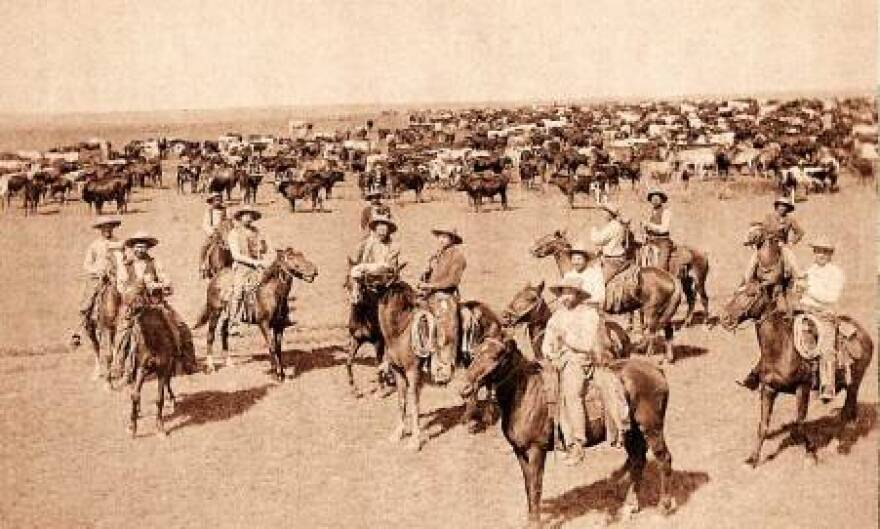In the spring of 1871, word came that Wichita might lose its position on the Texas Cattle Trail to rival Park City, located near modern Valley Center unlike its modern namesake. One morning, James R. Mead, J.M. Steele, N.A. English, and Mike Meagher rode out and encouraged the drovers to abandon their initial Park City plans and return, instead, to the older route by way of Wichita. In the encounter, the Four Horsemen foiled the efforts of Henry Shanklin, who was encouraging the drovers to favor the Park City route.
Mead had been a local leader since founding a trading post in Whitewater in 1863, followed by one near the Wichita people on the Ark rivers. The Wichita were pro-Union refugees who fled the turmoil of Indian Territory as northern and southern-leaning factions among Native Americans fought each other.
During the Civil War, the U.S. government established a new Wichita Agency in exile located at Towanda, a short distance from Mead’s “ranche.” In 1866, the new agent for the Wichita was Henry Shanklin. In 1867, it was Shanklin who oversaw the difficult and tragic trek of the Wichita back to lands in Indian Territory. Shanklin continued to head the agency through 1869. By 1871, he was in Lawrence and was an agent for the Kansas Pacific.
This means that the fateful meeting in 1871 was not the first encounter between Mead and Shanklin. While the nature of their relationship in the 1860s requires more research, knowing that there was a backstory hints that more may have been going on than just cattle routes.

